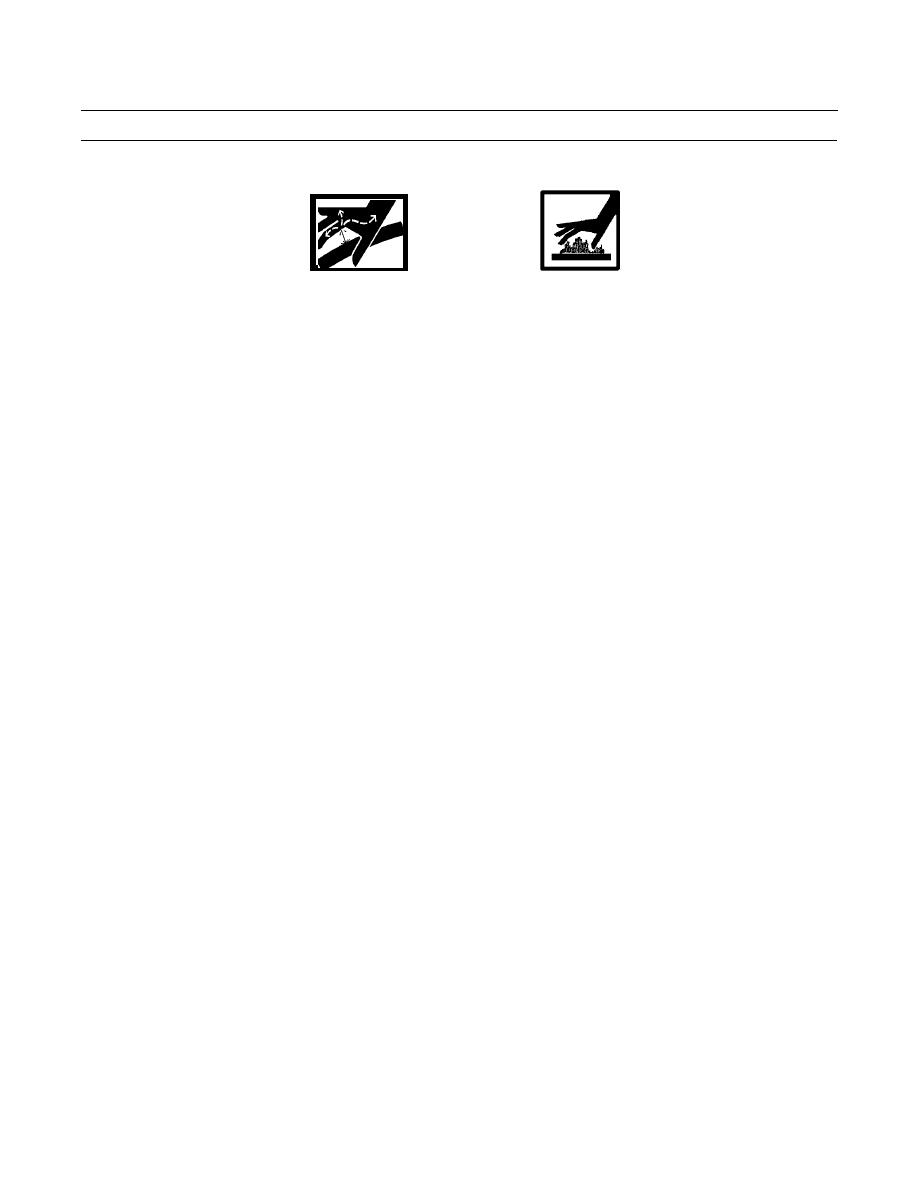 |
|||
|
|
|||
|
Page Title:
RELIEVING HYDRAULIC SYSTEM PRESSURE |
|
||
| ||||||||||
|
|
 TM 5-2410-233-23
GENERAL MAINTENANCE INSTRUCTIONS - CONTINUED
0176 00
RELIEVING HYDRAULIC SYSTEM PRESSURE
WARNING
Do NOT remove hydraulic tank filler cap or disconnect or remove any hydraulic system line
or fitting unless hydraulic system pressure has been relieved. Hydraulic system pressure can
be over 2500 psi (17,238 kPa), even with engine and pump OFF. To relieve pressure, lower all
hydraulic attachments to the ground and shut down engine. Move control levers through all
operating positions, then SLOWLY loosen hydraulic tank filler cap. After maintenance,
tighten all connections before applying pressure. Escaping hydraulic fluid under pressure can
penetrate the skin, causing serious injury or death.
At operating temperature hydraulic oil is hot. Allow hydraulic oil to cool before disconnecting
any hydraulics. Failure to do so could result in injury.
1.
Lower all machine implements to the ground.
2.
Shut down engine.
3.
Move all control levers through all operating positions. Return levers to HOLD position.
4.
Slowly loosen hydraulic tank filler cap and allow any pressure to escape.
5.
Before beginning a task, find out how much repair, modification or replacement is needed to fix the equipment as
described in this manual. Sometimes the reason for equipment failure can be seen right away and complete teardown is
not necessary. Disassemble the equipment only as far as necessary to repair or replace damaged or broken parts.
6.
All tags and forms attached to the equipment must be checked to learn the reason for removal from service. Check all
Modification Work Orders (MWOs) and Technical Bulletins (TBs) for equipment changes and updates.
7.
In some cases a part may be damaged by removal. If the part appears to be good, and other parts behind it are not defec-
tive, leave it on and continue the procedure. Here are a few simple rules:
a.
Do not remove dowel pins or studs unless loose, bent, broken or otherwise damaged.
b.
Do not pull bearings or bushings unless damaged. If you must get at parts behind them, pull out bearings or bush-
ings carefully.
c.
Replace all gaskets, seals, preformed packings, O-rings, cotter pins, spring pins, self-locking nuts, and lockwash-
ers.
0176 00-2
|
|
Privacy Statement - Press Release - Copyright Information. - Contact Us |